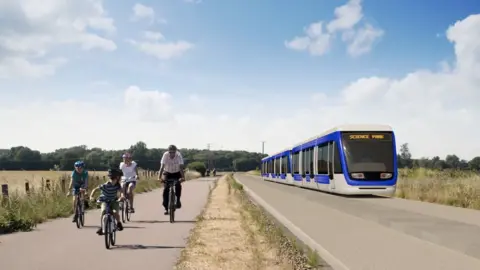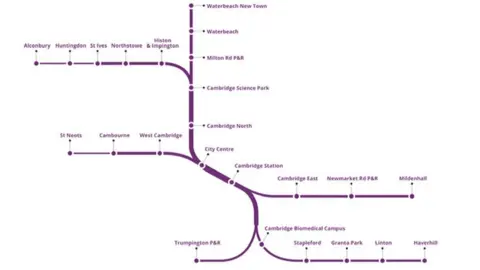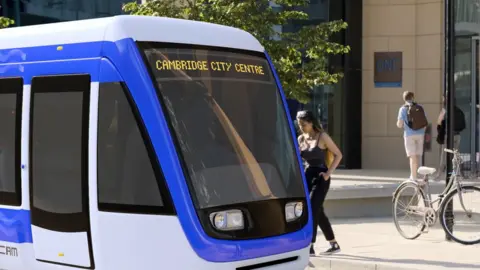'Compelling case' for Greater Cambridge metro
 CPCA
CPCAA £4bn metro system for Greater Cambridge could create 100,000 jobs and 60,000 new homes, a report claims.
The feasibility study, commissioned by the Cambridgeshire & Peterborough Combined Authority, has been backed by business and industry in the area.
It means work could begin on the so-called Cambridgeshire Autonomous Metro (CAM) as soon as 2021.
Mayor James Palmer said the report offers a "a compelling case" for a new regional transport network.
The metro, whose routes would cover 142km (88 miles), will be designed as a "turn up and go" service and include 12km (7.5 miles) of underground corridors beneath the city of Cambridge.
 CPCA
CPCA CPCA
CPCAIt would operate with zero-emission "trackless metro" electric vehicles - at a maximum speed of 55mph (90km/h) - capable of crossing the city in under 12 minutes, the report adds.
The CAM would connect the city to expanding villages such as Cambourne and Waterbeach - as well as regional towns including St Neots, Huntingdon, St Ives, Mildenhall and Haverhill.
 CPCA
CPCACrucially, it will encourage a "modal shift" away from the private car which would reduce congestion, emissions and accidents, Mr Palmer said.
The cost would be raised by a combination of local contributions and central government funds, he added.
He said: "This is one of the most pioneering transport infrastructure projects seen in the UK.
"The CAM will serve an area of international renown, with a dynamic economy full of world-class businesses, academic excellence and pioneering research and development."
Cambridge City Council leader, Lewis Herbert, said the metro would "transform public transport" and "navigate through and under our much-treasured, but medieval, city centre".
"But to get government support, it is critical that the next stage identifies the funding methods needed to secure close to £4bn in capital," he said.
